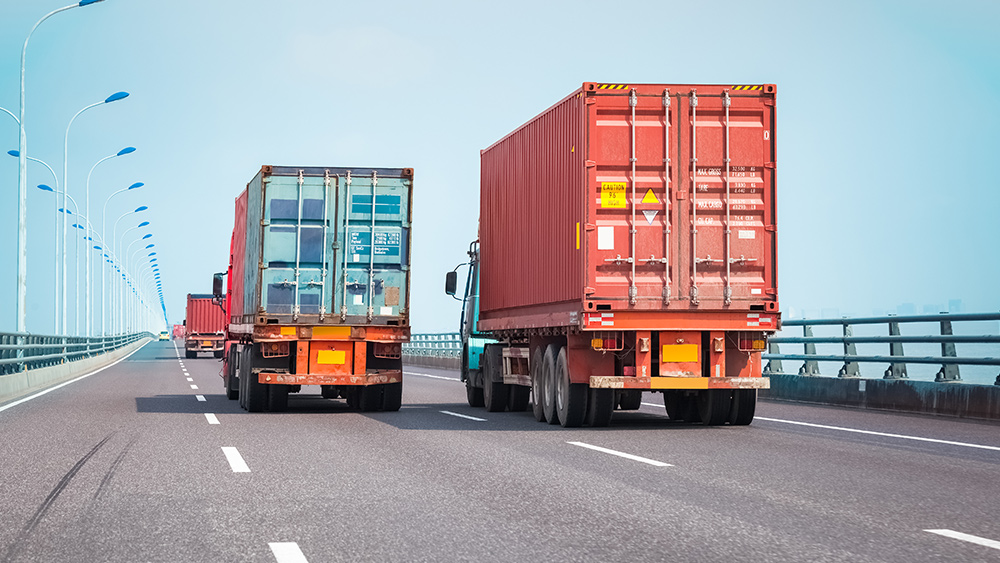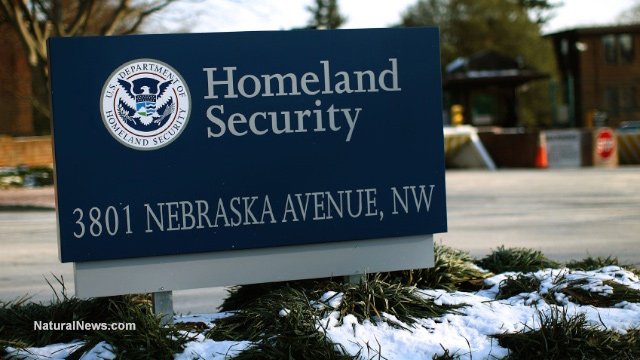Federal report: More truck drivers are dying from not using seat belts
07/04/2023 / By Zoey Sky

Recent fatality data has revealed that more truck drivers are dying from not using their seat belts, which has now become a cause of concern for federal regulators.
Polly Trottenberg, the deputy secretary of the Department of Transportation (DOT), spoke at a DOT safety forum and warned that seat belt usage has gone down in trucking and other sectors. “And when we look at the fatality numbers they are extraordinarily disproportionately people who are unbelted,” said Trottenberg.
In 2021, an alarming 64 percent of truck drivers killed in large truck crashes were not wearing their seat belts, according to the latest data compiled by the National Highway Traffic Safety Administration (NHTSA). The figures were only 59 percent and 44 percent in 2019 and 2020, respectively.
Seat belt use is crucial for truck driver safety
Data on deaths of large-truck occupants (drivers or passengers) show that only 42.6 percent were wearing seat belts.
Out of the drivers who were not, at least 75 percent were totally ejected from the truck. (Related: Truck driver killed, hazardous materials found as train and truck collide in Houston.)
Jessica Powell, a Federal Motor Carrier Safety Administration statistician, said that it is a trend experts are focusing on because the number of deaths is increasing at an alarming rate. She presented the data during a meeting of FMCSA’s Motor Carrier Safety Advisory Committee (MCSAC).
MCSAC’s two-day agenda included finalizing a three-year strategic plan for the agency, which is slated for approval later this 2023 after being reviewed by FMCSA Administrator Robin Hutcheson.
Adrienne Gildea, deputy executive director of the Commercial Vehicle Safety Alliance and vice chair of the committee, advised that the problem is serious enough to be incorporated into FMCSA’s strategic plan.
Gildea suggested that FMCSA should focus across their goals on that issue specifically, “including outreach and education.”
Gildea added that FMCSA should find out more about who these drivers are, such as their age and their specific sectors or regions. Investigating the demographic of these drivers and finding out who are the drivers who don’t wear their seat belts can help experts “improve seat belt use and reduce those fatalities,” added the deputy executive director.
Powell warned that the number of fatal crashes involving large trucks, which was 5,199 in 2021, has increased by 16 percent from 2020. At the same time, large-truck occupant fatalities increased by 23 percent to 1,019 in 2021, breaking the 1,000 mark for the first time since 2005.
NHTSA data also showed that both pedestrian and work-zone deaths due to crashes involving large trucks are also increasing.
The NHTSA reported that speeding was the most frequent truck driver-related factor in 2021, cited in seven percent of the recorded cases. This includes exceeding the speed limit or driving too fast for road conditions.
Powell noted that this is an underreported data element and that it is not “a true representation of what’s actually happening on the road.”
Road safety tips and seat belt facts
Be a responsible driver and keep the following in mind to avoid road accidents:
Wearing your seat belt is the most effective thing you can do to protect yourself in a car crash
Seat belts are the best defense against aggressive, distracted or impaired drivers.
During a crash, your seat belt will help keep you secure inside your vehicle. Without your seat belt, you could be completely ejected from your car, which is almost always deadly.
Airbags are not designed to replace seat belts
If you’re not wearing your seat belt when you crash, you could be thrown into the rapidly opening frontal airbag of your car. Such force could injure or even kill you, so always wear your seat belt.
Guidelines to buckle up safely
- Ensure that the lap belt and shoulder belt are secured across your pelvis and rib cage, which are better able to withstand crash forces than other parts of your body.
- Place the shoulder belt across the middle of your chest and away from your neck.
- The lap belt must rest across your hips, not your stomach.
- Do not put the shoulder belt behind your back or under an arm. Wear it properly to avoid serious injuries.
The fit matters
- Before you buy a new car, check if the seat belts are a good fit for you and your family.
- Talk to your dealer about seat belt adjusters, which can help you get the best fit for all family members.
Seat belt safety for pregnant women
If you are pregnant, learn how to safely position your seat. Wear a seat belt to maximize your safety and the safety of your unborn baby.
Doctors recommend that pregnant women wear seat belts. Buckling up through all stages of your pregnancy is the most effective way to protect yourself and your unborn child in a car crash.
If you are pregnant, do not drive or ride in a car without buckling up first.
The right way to wear your seat belt
Place the shoulder belt away from your neck, but not off your shoulder, and across your chest between your breast. Remove any slack from your seat belt with the lap belt secured below your belly so that it fits snugly across your hips and pelvic bone.
Do not place a lap belt over or on top of your belly.
If you are involved in a car crash, seek immediate medical attention, even if you think you are safe and regardless of whether you’re the driver or passenger.
Drive safely and always wear your seat belt to avoid serious injuries during a car crash.
Watch the video below for a car crash simulation at different speeds.
This video is from the TestimonyOfTheTwoWitnesses.com channel on Brighteon.com.
More related stories:
Self-driving cars are causing traffic incidents all over San Francisco.
Two American vehicle companies recall over 600 electric trucks due to safety issues.
Self-driving cars are causing traffic incidents all over San Francisco.
Sources include:
Submit a correction >>
Tagged Under:
accidents, big government, car crash, cars, chaos, collision, crash, Dangerous, disaster, national security, Polly Trottenberg, road safety, seatbelts, transportation, truck driver safety, trucking regulation, trucks
This article may contain statements that reflect the opinion of the author
RECENT NEWS & ARTICLES
COPYRIGHT © 2017 NATIONAL SECURITY NEWS





















